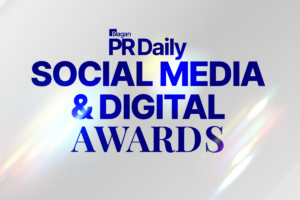Building a stronger brand to withstand the social media haters
The new rules of business branding are becoming clear, and organizations that have found big success should be prepared for a backlash online.

One of the biggest shifts in business branding over the last few years is the success of social media harassment mobs in driving bad press for big businesses. A second big shift is how brands big and small are quick to retreat after even modest criticism.
These trends are great for crisis communications firms and political activists, but they portend disaster for small businesses which don’t have the time or money to respond to social media trolls and rebuild reputations.
No company is safe from this trend. Starbucks is a leader in left-of-center corporate politics, but in 2018 it had to close 8,000 stores for “racial-bias education,” which cost the company more than $10 million. Chick-fil-A was a popular choice for the social conservative until it decided to stop funding The Salvation Army. Most recently, Burger King U.K.’s choice to turn a sexist phrase on its head to promote its female chef scholarship program ran into a Twitter mob.
These companies survived the turmoil because they’re massive. They can take the hits and keep going. However, a small business might not have the luxury of losing customers, temporarily closing shop, or hiring legal and PR help during a crisis.
And the criticism on social media isn’t always about politics: Paper Source got a lot of bad press earlier this month when an Esty-based card company accused it of unethical behavior.
The good news for small businesses is that this trend probably won’t hit you. There are bigger fish to fry. The bad news is that if it does, you’ll have to be prepared.
Here are the concrete, proven ways to handle the new rules of business branding:
Priority 1: Put customer value over customer values.
Watching the big dogs retreat like puppies from criticism, it’s easy to think that the way to avoid criticism is to keep up with the Joneses on customer values. But values change, and today’s online mobs don’t tolerate mistakes. The wise small business owner should seek to provide the greatest value to customers because most customers will still choose the business that delivers the best service over the one that panders to their views. To put it another way: no one on either side of the political spectrum will go to Starbucks for a car loan.
Putting customer value over customer values brings many benefits to small business owners. They include, but are not limited to:
- Greater available market share, because most people seek value before values.
- Focusing your limited resources on branding, business development, and customer service to grow faster and make more money.
- Fewer unforced brand errors as customer values continue to change—but your dedication to customer value won’t.
Priority 2: Be proactively prepared.
A few thousand dollars now is worth tens of thousands of dollars in panicked, unprepared responses later. The same way professional athletes develop muscle memory, small businesses should take several proactive steps to train themselves for a crisis:
- Have a good law firm on retainer that knows your company, industry and target markets. Those looking to malign your company will often back off once real consequences flash in front of their eyes.
- Don’t scrimp on marketing, branding or earned media. Building great relationships with the public, community leaders and media gatekeepers now makes it more likely that they’ll listen to you in an emergency.
- Build a great internal team. The best opportunity to build loyalty is when times are good. Loyal staff breed loyal customers who will stick with you in tough times.
- Create streamlined, efficient operations so that your gross and net profits are high, and prioritize company savings. Money can’t solve all of your problems, but it sure can help when an emergency arises – everything from engaging in legal action to hiring crisis communications experts or temporarily increasing your marketing budget until the crisis is over.
Of course, sometimes you can’t avoid getting attacked by haters—whether, they are competitors, customers, basement losers or drive-by critics.
Priority 3: Prepare crisis communications plans.
The traditional, proactive crisis communications strategy consists of predicting the most likely scenarios which your firm will face, and building tactics to respond quickly and effectively. It’s important, however, to consider not just how to respond, but also if to respond.
Consider these three options when online mobs with digital pitchforks come after you:
1. Radio silence.
Boeing faced blistering criticism from Nikki Haley, former governor of South Carolina, for seeking a government bailout last year. Instead of engaging in a tit-for-tat public debate, the company quietly went about getting the money it wanted. Boeing ignored a high-profile critic because its leadership recognized that Haley’s target market—the conservative Republican voter—was different from Boeing’s target market, the federal contractors, elected officials and military personnel who make contract decisions.
Her criticism was, for Boeing’s purposes, irrelevant. Any responses would have made a molehill into a mountain.
In the same way that celebrities ignore most of their haters (until they’re on Jimmy Kimmel), small business owners should refuse to divert scarce resources away from growth if the criticism is irrelevant or it would be seen as “punching down.”
2. Push back.
Trader Joe’s long practice of nicknames like “Trader Jose” for its ethnic food products created a “controversy” last year after a petition received a few thousand signatures from people demanding the company address its “racist packaging.” While it initially considered changing some names with international origins, and received significant press and social media attention because of the miniscule petition, the company later chose to stand its ground. “We do not make decisions based on petitions,” it said. “We make decisions based on what customers purchase, as well as the feedback we receive from our customers and crew members.”
There’s always risk to standing your ground, so do it carefully so you don’t create a longer, more negative news cycle. Notice that Trader Joe’s statement was customer and employee-focused. After standing up for itself in a measured fashion, the controversy effectively disappeared.
3. Apologize and make amends.
Sometimes, you simply mess up. Fix it as fast as possible with the resources required. Just as with the “push back” option, be sure you carefully weigh the costs and benefits. You don’t want to develop a reputation for caving. That could result in a double-whammy of critics who want you to change, and critics who wanted you to stay the course.
Dustin Siggins is CEO of Proven Media Solutions, a Virginia-based PR firm.






